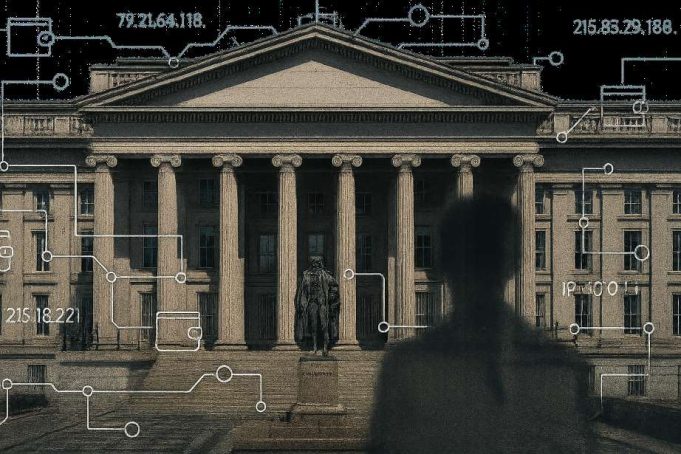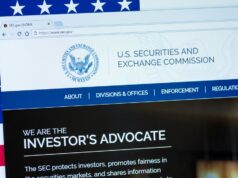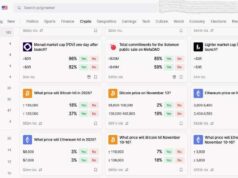The U.S. Treasury is preparing to finalize its controversial mixer rule, first proposed in 2023 under the previous administration. Treasury officials insist the measure is not a ban. Still, its sweeping definition of crypto “mixing” and strict reporting requirements for any foreign-linked transactions raise fears of a de facto crackdown on crypto privacy. Many expected that a more crypto-friendly White House might soften the proposal. However, FinCEN has not amended the rule since its initial draft.
Background: From 2023 to Today
The proposed FinCEN regulation on crypto mixers was introduced in October 2023 as a Notice of Proposed Rulemaking (NPRM) under Patriot Act Section 311. For the first time, FinCEN designated a class of transactions, international crypto mixing, as a primary money laundering concern.
The rule was designed to force U.S. financial institutions to collect and report data on foreign nexus transactions involving mixers. The comment period closed in January 2024. Since then, the proposal has moved into the final rule stage, with publication expected later in 2025. Notably, the text has not been revised or amended since its initial release.
What the Rule Requires
If finalized as proposed, the U.S. Treasury mixer rule would impose significant obligations on “covered financial institutions.” This group includes banks, broker-dealers, money services businesses (MSBs), custodians, and mutual funds.
Any transaction involving crypto mixers and a foreign connection must be reported within 30 days of detection. Institutions must log details, including:
- Wallet addresses linked to the mixer or customer
- Transaction hashes and timestamps
- Customer identifiers such as name, address, date of birth, and taxpayer information
- Associated IP addresses
These records must remain on file for five years. This requirement extends compliance obligations well beyond the usual scope of transaction reporting under standard anti-money laundering (AML) rules.
Why It’s Controversial
The most contentious element is the rule’s definition of “mixing.” It covers not only obvious obfuscation services but also common transaction behaviors such as splitting funds, chain-hopping between assets, or using single-use wallets.
Critics argue this broad scope risks sweeping ordinary activities into the same bucket as deliberate laundering. For privacy advocates, the measure represents a direct threat to crypto privacy. Even though FinCEN frames it as a transparency requirement rather than a prohibition, the chilling effect could amount to a de facto ban on privacy tools.
Users who rely on mixers for legitimate financial privacy, including journalists and activists, may find their transactions flagged simply for crossing borders. Moreover, opponents say the approach expands AML enforcement in ways that could discourage lawful innovation in the privacy sector.
Political Context
The mixer rule’s persistence across administrations underscores how FinCEN regulation operates with institutional momentum. It originated under a White House perceived as skeptical of digital assets. Yet it has advanced unchanged under the current administration, which has projected a more favorable stance toward innovation in crypto regulation and DeFi.
This continuity highlights the deep concern regulators share about mixers as a systemic AML risk. It also shows that even a friendlier political environment for crypto does not necessarily translate into lighter-touch policy on financial privacy.
Industry Impact and Reactions
For crypto exchanges and custodians, the rule would mean heavier compliance burdens and greater reliance on blockchain analytics tools to track transactions with a foreign nexus. Banks and broker-dealers will also need to integrate new workflows to detect and report potential mixing activity.
Moreover, exposure could occur several hops away from the original customer, adding complexity and cost. This creates new challenges for DeFi compliance, where protocols often lack centralized control. Industry groups, including the Blockchain Association, have urged FinCEN to clarify the scope. They want it to narrow its definition of mixers and create safe harbors for legitimate use cases.
Without these changes, institutions may resort to de-risking. This could mean blocking entire categories of transactions rather than risk regulatory penalties.
>>> Read more: Roman Storm Conviction: Tornado Cash Trial Fallout
The U.S. Treasury mixer rule is listed in the federal Unified Agenda as being in the final rule stage. Publication is expected in late 2025. Once finalized, financial institutions will need to adapt compliance systems rapidly to meet the 30-day reporting deadline and five-year retention requirement.
However, whether the final rule reflects industry feedback remains open. If the original proposal holds, advocacy groups are likely to challenge it in court, and crypto lobbyists will continue pressing for revisions.
More broadly, the rule signals that U.S. authorities increasingly treat crypto privacy tools as systemic risks in the fight against money laundering rather than a neutral infrastructure. The approach may also shape future debates on AML obligations for decentralized platforms and privacy-enhancing technologies.
Readers’ frequently asked questions
Is the U.S. Treasury’s mixer rule already in effect?
No. The rule is still in the final rulemaking stage. It was proposed in October 2023, the comment period closed in January 2024, and the final version is expected to be published later in 2025. Until then, existing AML obligations apply, but the mixer-specific reporting requirement has not yet taken effect.
Who will be required to comply with the mixer rule once it is finalized?
The rule applies to “covered financial institutions” under the Bank Secrecy Act. This includes banks, broker-dealers, money services businesses (MSBs) such as exchanges and custodians, futures commission merchants, and mutual funds. These entities will need to detect and report transactions that involve foreign-linked crypto mixing.
Does the mixer rule make it illegal for individuals to use privacy tools?
Not directly. The rule does not create criminal penalties for individual users. Instead, it compels institutions to flag and report transactions involving mixers. However, because of the rule’s broad definition of “mixing,” many expect exchanges and banks to block mixer-related activity altogether to avoid regulatory risk. This could make it much harder for individuals to access privacy tools in practice.
What Is In It For You? Action items you might want to consider
Monitor the final rule’s publication timeline
Stay alert for the Treasury’s official release of the final mixer rule, expected in late 2025. This will mark the point when new compliance obligations come into effect for financial institutions.
Assess exchange and custodial policies on mixers
If you trade or hold crypto through regulated exchanges or custodians, prepare for stricter restrictions. Many institutions may block transactions linked to mixers once the rule passes.
Follow DeFi compliance developments
Projects in the DeFi space may need to adapt if regulators extend AML-style oversight to decentralized protocols. Users and developers should track how the rule shapes future compliance expectations in DeFi.










